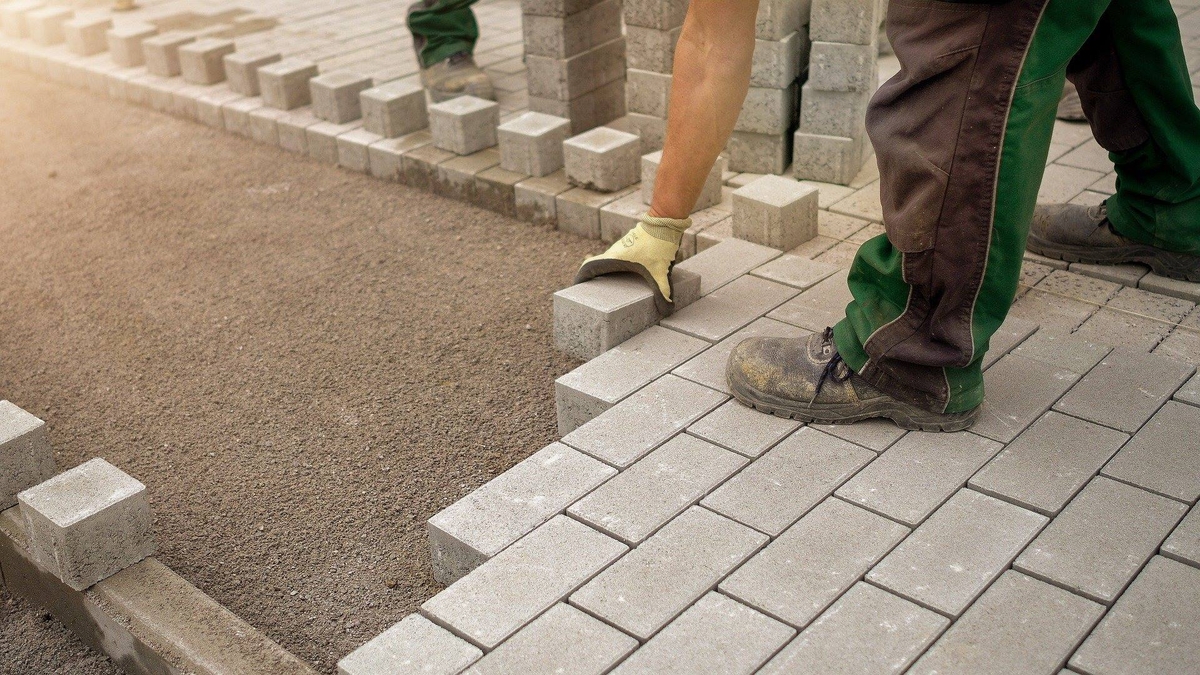Retaining walls aren’t just functional landscaping elements; they can be stunning features that enhance your outdoor spaces. At Minnehaha Falls Landscaping, we often get questions about retaining wall cost and whether they are worth the investment.
Let’s explore what influences retaining wall cost and look at scenarios where installing one makes sense.
What is a Retaining Wall?
A retaining wall is designed to hold (or retain) soil behind it. We commonly use these walls in landscaping to address ground elevation changes and help prevent soil erosion. A garden retaining wall can also be a decorative element in your yard, adding functionality and beauty!
How to Calculate the Cost of a Retaining Wall
There are a few different factors that can influence retaining wall cost:
- Material. Common retaining wall materials include concrete blocks, natural stone, and timber. Each has its price range, with natural stone typically being the most expensive and timber the least.
- Size and Height. Unsurprisingly, taller and longer walls require more materials and labor, which can increase the overall cost.
- Site Preparation. If the area needs extensive grading, clearing, or drainage solutions, expect the costs to rise.
- Design Complexity. Simple, straight walls are cheaper to construct than those with curves, steps, or intricate designs.
- Labor. These costs vary based on the expertise required and local rates. Professional installation is recommended for most retaining walls to ensure stability and durability.
- Additional Features. Incorporating lighting, seating, or planters can increase the cost but also enhance the wall’s functionality and style.
Average Retaining Wall Cost Estimates
On average, retaining walls can cost anywhere from $20 to $60 per square foot. Here’s a very rough breakdown based on materials:
- Timber: $15 – $25 per square foot
- Concrete Blocks: $20 – $35 per square foot
- Natural Stone: $25 – $60 per square foot
Please note: These are ballpark figures—the actual cost will vary based on your yard and the specifics of your project. A garden retaining wall is an investment in the form and function of your landscape.
So, When is a Retaining Wall Worth the Investment?
Preventing Soil Erosion. As we mentioned above, one of the primary functions of a retaining wall is to prevent soil erosion. If your property is on a slope, a retaining wall can help keep the soil in place, protecting your landscape and home foundation from erosion. Investing in a retaining wall in such cases is not just worth it; it’s essential.
Enhancing Property Value. A well-designed retaining wall can significantly enhance your property’s curb appeal by adding structure, creating usable space, and becoming a focal point in your landscape design. This can increase your property’s value, making it a wise investment, especially if you plan to sell your home in the not-so-distant future!
Increasing Usable Space. For properties on uneven terrain, retaining walls can create flat spaces for gardens, patios, or play areas so you have more places to relax outside.
Solving Drainage Issues. Our retaining walls are designed for proper drainage, helping to manage water runoff and prevent water from pooling in undesirable areas. This can protect your property from water damage!
Beautifying Spaces. With so many materials and designs, retaining walls can be beautiful features that complement your home or business’s architecture.
What is the Lifespan of a Retaining Wall?
The lifespan of a retaining wall depends on the materials used, the quality of construction, and environmental conditions. Here’s a breakdown of the expected lifespan for various types of retaining walls:
Timber Retaining Walls
- Lifespan: 10-20 years
- Factors: Timber walls are more susceptible to rot, termites, and weathering. However, expert installation and diligent maintenance can extend their lifespan.
Concrete Block Retaining Walls
- Lifespan: 50-100 years
- Factors: These walls are highly durable and resistant to weathering. Proper installation with good drainage is crucial to prevent cracking or shifting.
Natural Stone Retaining Walls
- Lifespan: 50-100 years
- Factors: Natural stone is incredibly durable and can last for decades, especially when installed with adequate drainage.
In short, the key to longevity is choosing the right materials for your environment, going with high-quality construction, and performing regular maintenance.
Go Local With Minnehaha Falls Landscaping
Investing in a retaining wall can be a wise decision! It’s worth noting that areas with heavy rainfall or freeze-thaw cycles, like here in Minnesota, benefit from more precise and expert construction.
At Minnehaha Falls Landscaping, we pride ourselves on building durable, stylish walls that stand the test of time, keeping in mind your local environmental conditions and what you want out of your yard.
Contact our team today to discuss your project. We’re here to ensure your investment is well worth it.












